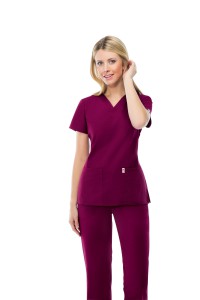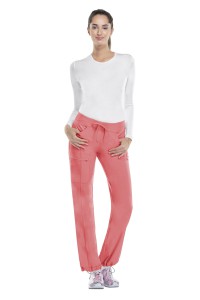You may be old enough to remember a time when nurses wore all white, and scrubs wasn't a popular term in the English language. These days, many healthcare workers wear the same basic type of clothing on the job. They're convenient, comfortable and can help with patient relations. They weren't always a mainstay in healthcare settings, however. Discover the origin of scrubs in our short - but sweet - history of medical workwear.

Doctor Scrubs Were Originally Used to Protect Clothing
In the early 20th Century, doctors wore business attire to work. They may have worn aprons during surgery or jackets during exams and other procedures. These special pieces of medical workwear were meant to protect their clothes from blood, other fluids and general mess. It wasn't until scientists learned more about germs, though, that hospitals began going to great lengths to sterilize operating rooms and equipment. Once it was known that germs could cling to clothing and put people at risk, special clothing was worn in operating rooms.
So, why are they called “scrubs” exactly? Well, there are a few different explanations that could be true. Some people say it's due to an OR being “scrubbed” or sterilized for surgery. By association, the clothes worn in scrubbed environments adopted the term. Others say it's because the bloody garments had to be scrubbed vigorously between uses.
Today we have brands that are specially made to be resistant to germs, like the Certainty Antimicrobial Women's Low-Rise Straight Leg Drawstring Pant (CE-1123A) or the Code Happy Antimicrobial Women's V-Neck Top (CO-46607A). We also have selections that make it easier to resist stains, including traditional white uniforms which previously were so difficult to keep clean.

From White Scrubs to Surgical Greens
Surprisingly, it wasn't persistent stains that changed the industry preference toward uniform color. In the past, plenty of doctors wore their bloody garments like life-saving badges of honor. However, as procedures changed and rooms became sterile, the color white became associated with strict hygiene standards. Patients took comfort in their appearance. Unfortunately, the starkness of the white uniforms under surgery lights became a problem. Surgeons eyes' fatigued quickly under the strain, so they looked for a gentler alternative.

Green fatigues became popular in the 1970s as an alternative that was easy on the eyes while maintaining a professional look. Patients associated green with life, nature and peacefulness. It was a color that calmed the senses, and before long the green scrub tops and pants were accepted as an industry staple. At this time, the garments were called “Surgical Greens” by many in and out of the field.
As time went on, the style of clothing used in ORs was adopted by workers throughout healthcare settings. Recognized as healthcare workwear, the uniforms quickly replaced typical white uniforms in hospitals, clinics, dentist offices and other health centers. As that change occurred, the terms “scrubs” became popular right along with them. This was likely a way to separate them from the sterilized doctors' scrubs worn during surgeries.
Scrubs of History and of Today
The white, starched uniforms of the past are still used in some practices, but most healthcare professionals have made the switch to more modern attire. Several styles of shirts and pants help keep workers as comfortable as possible while providing them with the features needed to stay productive on the job. Wide pockets, numerous instrument loops, stretch panels and even tech-ready attachments make it easy for today's nurses, doctors and others to provide the best possible care for patients.
The array of styles, fabrics, colors and designs keep you feeling and looking your best as well. Healthcare isn't boring, and your clothes don't have to be, either. In fact, a lot of research has gone into the impact colors have on patients, and studies show the right designs can help connect with patients - particularly with children.
Get all of your uniform essentials purchased at Pulse Uniform. We have all of the style and functionality you'd need, and we strive to keep prices low. Need help with a custom order? Talk with our dedicated sales staff today!